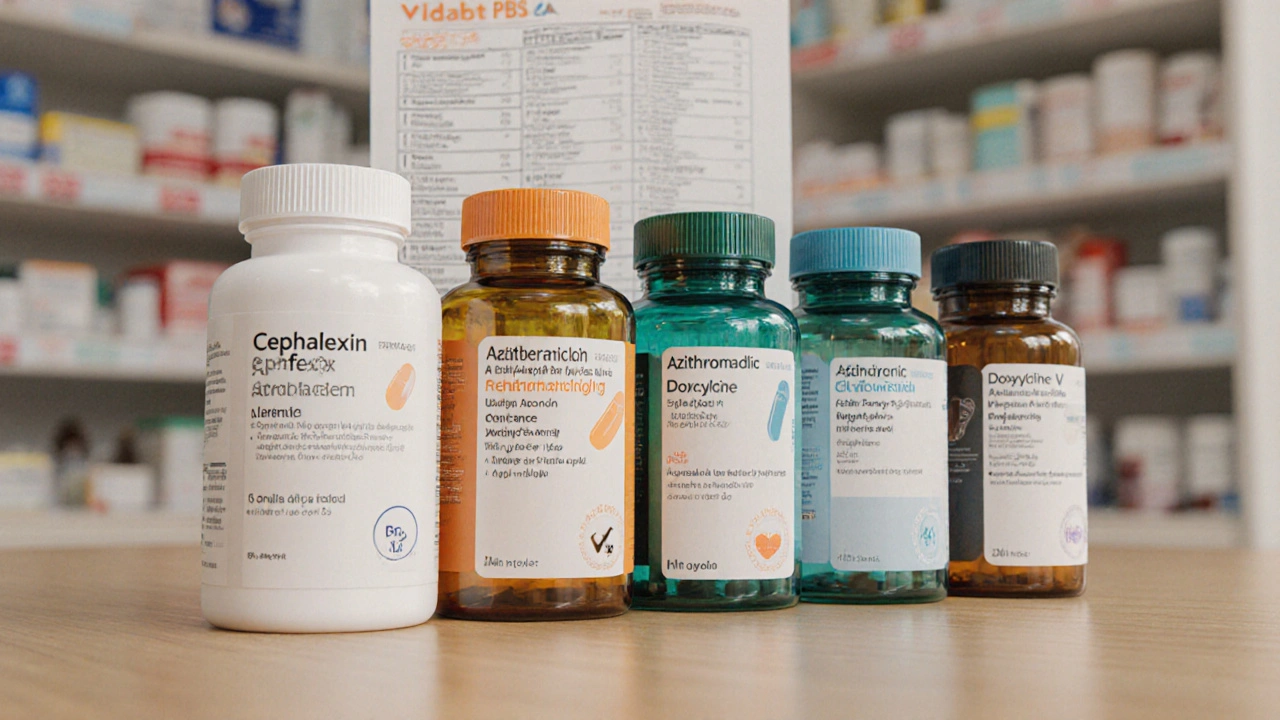Phexin Antibiotic: What It Is and Why It Matters
When dealing with Phexin antibiotic, a broad‑spectrum oral medication used to treat a variety of bacterial infections. Also known as Phexin, it works by blocking bacterial protein synthesis, making it effective against both gram‑positive and gram‑negative pathogens. This class of drug fits squarely within the fight against bacterial infections, illnesses caused by harmful bacteria that can affect skin, lungs, urinary tract, and more. Knowing the kind of infection you face helps you decide if Phexin is the right choice.
One of the biggest hurdles today is antibiotic resistance, the ability of bacteria to survive despite exposure to drugs designed to kill them. Phexin’s broad coverage can be a double‑edged sword: it clears many bugs, but overuse may push bacteria toward resistance. That’s why clinicians pair the drug with stewardship strategies, such as confirming the infection type before prescribing.
Key Factors That Shape How Phexin Is Used
Understanding the pharmacokinetics, how the body absorbs, distributes, metabolizes, and eliminates a medication of Phexin is crucial for dosing. The drug is well absorbed orally, reaches peak levels within two hours, and is excreted mainly via the kidneys. Patients with reduced kidney function often need dose adjustments to avoid buildup and side effects.
Another practical angle is the drug’s formulation. Phexin is commonly available as an oral suspension for children and adults who have trouble swallowing pills. This form offers flexible dosing, especially in pediatric cases where weight‑based calculations matter. The suspension also allows clinicians to start treatment quickly while awaiting lab confirmation of the pathogen.
Safety considerations go beyond resistance. Common side effects include mild gastrointestinal upset, such as nausea or diarrhea, which usually resolve on their own. Rarely, patients may experience allergic reactions ranging from rash to more severe anaphylaxis. If any sign of hypersensitivity appears, the medication should be stopped immediately and medical help sought.
Therapeutic monitoring can be useful in certain scenarios. For example, when Phexin is used to treat serious infections like community‑acquired pneumonia, doctors may order follow‑up cultures to confirm bacterial clearance. This practice ties back to the earlier point about stewardship: confirming success helps avoid unnecessary extensions of therapy.
Drug interactions are another piece of the puzzle. Phexin can increase the effects of anticoagulants such as warfarin, raising the risk of bleeding. It may also reduce the efficacy of oral contraceptives, so patients should discuss backup birth control methods with their physician.
In the broader context of antibiotic therapy, Phexin sits alongside other agents like amoxicillin, doxycycline, and cefadroxil. Each has its own spectrum, dosing regimen, and resistance profile. Comparing these options helps clinicians tailor treatment to the specific pathogen, patient allergies, and local resistance patterns. That comparative mindset is reflected in many of the articles you’ll find below, which weigh pros and cons of various antibiotics and related meds.
Overall, using Phexin effectively hinges on three core ideas: accurate infection identification, awareness of resistance trends, and proper dosing based on pharmacokinetic principles. When these align, patients benefit from faster recovery and fewer complications.
Below you’ll discover a curated set of articles that dive deeper into related topics—ranging from cheap generic drug guides to side‑by‑side comparisons of antibiotics, antihistamines, and heart medications. Whether you’re looking for cost‑saving tips, safety alerts, or detailed drug‑class breakdowns, the collection offers practical insights to help you make informed choices about Phexin and other therapies.
